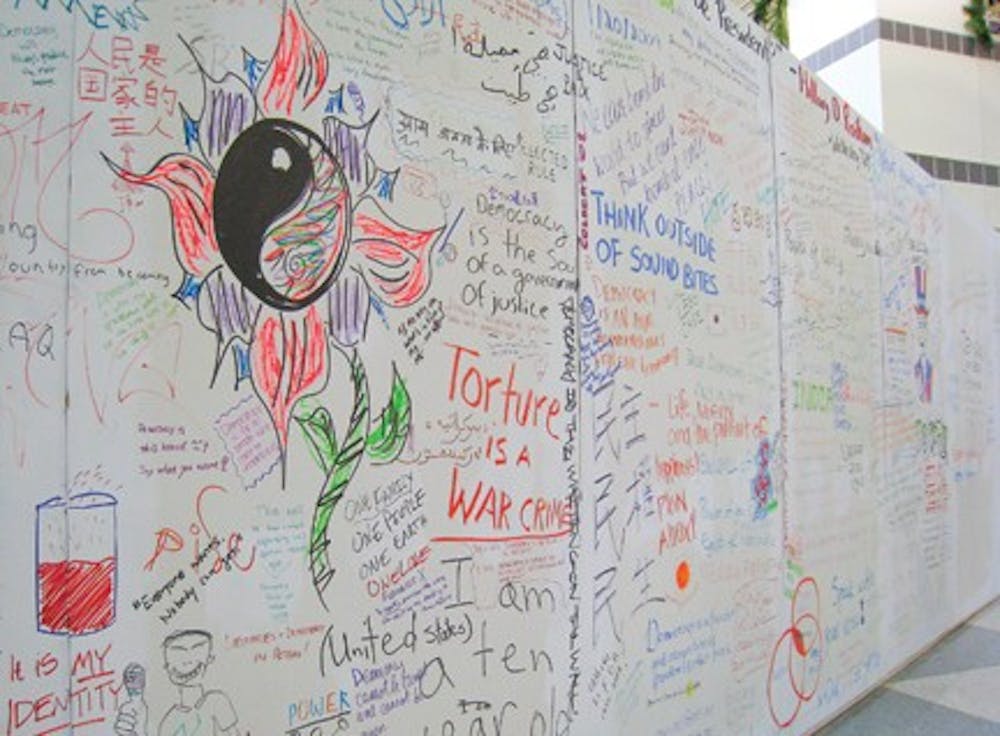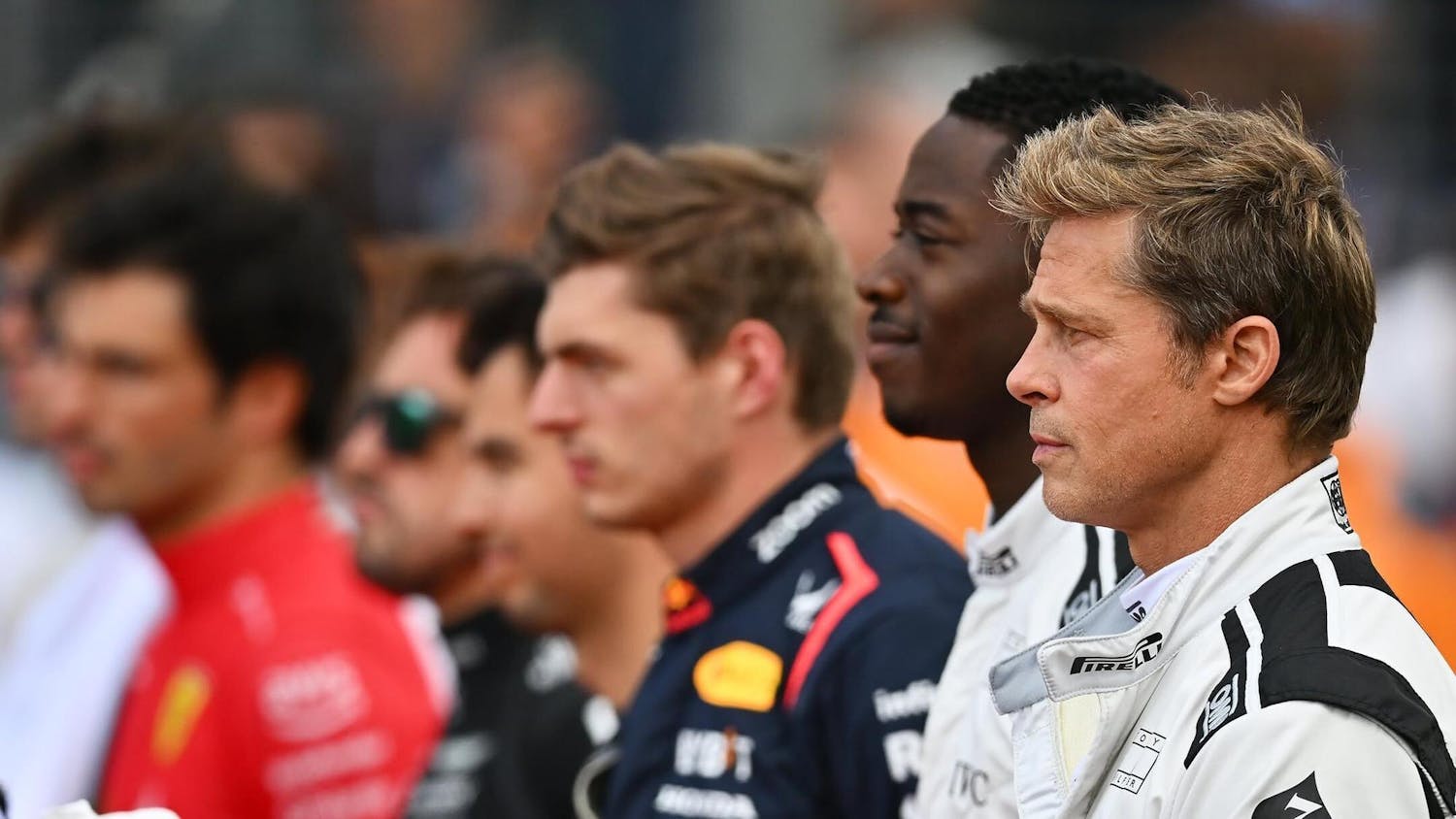If the walls could talk, Joe LaMantia thinks they would speak about democracy.\nLaMantia, local artist and coordinator for “Writing on the Wall,” an ArtsWeek exhibit which asked community members to use graffiti to communicate their views of democracy, joined city and campus representatives for a panel discussion of graffiti’s place in the arts on Friday night at the School of Fine Arts Gallery.\nFrom October to December, LaMantia installed blank panels at several campus and city locations and invited passersby to write or draw their conception of democracy. \nPresident Michael McRobbie spoke briefly in support of the exhibit.\nMcRobbie compared graffiti art to the work of abstract artists such as Jackson Pollock to make the point that graffiti art is equally misunderstood and potentially great.\nHe also spoke about the importance of graffiti art in recent history.\n“Graffiti art calls to mind the extraordinary symbolism of the Berlin Wall,” McRobbie said. “The graffiti on the western side was a monument to freedom.”\nLaMantia said that his goal in this project was to learn about democracy.\n“I wanted to find out what democracy was,” he said. “It’s nothing I can just put into one sentence or paragraph. Nineteen panels is only the beginning of the definition of democracy.”\nThe panels that make up the “Writing on the Wall” project are filled with slogans such as “Make love not war!” and “Use it or lose it!” Proclamations such as “Democracy looks more like Bloomington than Washington!” and quotations from Winston Churchill, Hillary Clinton and the Dalai Lama also fill the wall. There are also drawings of Uncle Sam, swastikas, dollar signs, peace signs and phrases written in several foreign languages, including a passage in Korean that translates into “Democracy is a tree that drinks blood and grows.” In response to the question “What is democracy?” one person wrote: “I don’t know.”\nBeau Vallance, an art educator in the school of education, moderated the panel discussion, which included LaMantia as well as Miah Michaelsen, Bloomington’s associate economic development director for the arts, Jon Simons, associate professor of communication and culture, Michelle Facos, associate professor of art history, and Valerie Grim, associate professor of African diaspora studies.\nThe panel discussed topics such as the compelling nature of graffiti, speculated on why graffiti contains more words than pictures and shared stories about its limited experiences with graffiti. Four of the five graffiti artists who had prepared pieces for the exhibit sat in the audience.\nMalcolm Smith, who created “The Grand Experiment,” a piece that depicts the word “democracy” as a burning, bubbling mixture that has been poured out of test tubes, spoke up from his seat in the audience during the panel discussion.\nSmith explained that graffiti must always stay on the fringes of society.\n“It will not be graffiti if it ever becomes accepted into the mainstream,” he said.\nHe described how the work of Keith Haring, a graffiti artist who first gained fame in the 1980s for chalk drawings in the New York subway, lost much of its power once it became “commodified” and “merchandised.” Prints of his work can be found on items such as T-shirts, mugs and key chains.\nGraffiti artists Julian Hensarling, Mike Burchfield, Hannah Shuler and David Ebbinghouse also prepared pieces for the exhibit.\n“Writing on the Wall” will be on display at the School of Fine Arts Gallery until March 8.
Artistry of vandalism

Get stories like this in your inbox
Subscribe





